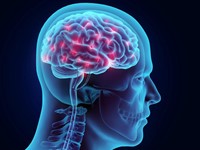Massage Therapy for Concussion Management
BlogImage
Chronic post-traumatic headache occurs commonly when people have a concussion, and can have a significant negative impact on quality of life and function. Headaches are the most common type of chronic pain after a mild-traumatic brain injury, however many people don’t get treatment for this issue. Early intervention is key in concussion treatment and massage therapy is a great way to help ensure the cervicogenic headaches common after a concussion don’t become chronic post-concussion headaches. Massage therapy is frequently recommended by physicians as part of a concussion management treatment plan.
Cervicogenic headaches are often a result of whiplash that occurred at the time of the concussion, and massage therapy can help patients find relief. Massage therapy techniques including hands-on massage and range of motion exercises can strengthen the deep and superficial cervical musculature and help people with this type of injury reduce their pain and help prevent chronic post-concussion headaches.
Massage therapy is recognized as a valuable treatment option for whiplash injuries in general, especially when combined with exercise recommendations that can be provided by an RMT, to help people with whiplash injuries reduce their pain and improve their function. The forces that affect the brain during a concussion are frequently transmitted to the cervical spine, and the resulting whiplash injury is often undiagnosed. Massage therapy can be a particularly beneficial treatment option for this injury.
Cervicogenic headaches are a common symptom of any traumatic brain injury due to the neck/spine trauma from the whiplash injury following a concussion. Conservative manual therapy, including massage therapy, is an effective way to decrease the frequency and intensity of cervicogenic headaches. Non-pharmacological interventions like massage therapy, exercise and pain education are an effective option for both managing the pain of chronic cervicogenic headaches and improving the health-related quality of life for people with that condition.
Persistent symptoms after a concussion, including headaches, can be debilitating and can have a significant negative impact on quality of life. Registered Massage Therapists can help patients who have had a concussion by providing massage therapy treatment to help relieve the pain of their post-concussion headaches.
References
Anderson, C., Yeung, E., Toong, T., Tong, T., & Reed, N. (2018). A narrative review on cervical interventions in adults with chronic whiplash-associated disorder. BMJ open sport & exercise medicine, 4(1), e000299.
Defrin R. (2014). Chronic post-traumatic headache: clinical findings and possible mechanisms. The Journal of manual & manipulative therapy, 22(1), 36–44.
Ellis, M. J., Leddy, J., & Willer, B. (2016). Multi-Disciplinary Management of Athletes with Post-Concussion Syndrome: An Evolving Pathophysiological Approach. Frontiers in neurology, 7, 136.
Fernández-de-Las-Peñas, C., Florencio, L. L., Plaza-Manzano, G., & Arias-Buría, J. L. (2020). Clinical Reasoning Behind Non-Pharmacological Interventions for the Management of Headaches: A Narrative Literature Review. International journal of environmental research and public health, 17(11), 4126.
Morin M, Langevin P, Fait P. Cervical Spine Involvement in Mild Traumatic Brain Injury: A Review. J Sports Med (Hindawi Publ Corp). 2016;2016:1590161.
Permenter CM, Fernández-de Thomas RJ, Sherman AL. Postconcussive Syndrome. 2020 Sep 3. In: StatPearls [Internet]. Treasure Island (FL): StatPearls Publishing; 2020 Jan–. PMID: 30521207.
Racicki, S., Gerwin, S., Diclaudio, S., Reinmann, S., & Donaldson, M. (2013). Conservative physical therapy management for the treatment of cervicogenic headache: a systematic review. The Journal of manual & manipulative therapy, 21(2), 113–124.
Teasell, R. W., McClure, J. A., Walton, D., Pretty, J., Salter, K., Meyer, M., Sequeira, K., & Death, B. (2010). A research synthesis of therapeutic interventions for whiplash-associated disorder (WAD): part 2 - interventions for acute WAD. Pain research & management, 15(5), 295–304.


